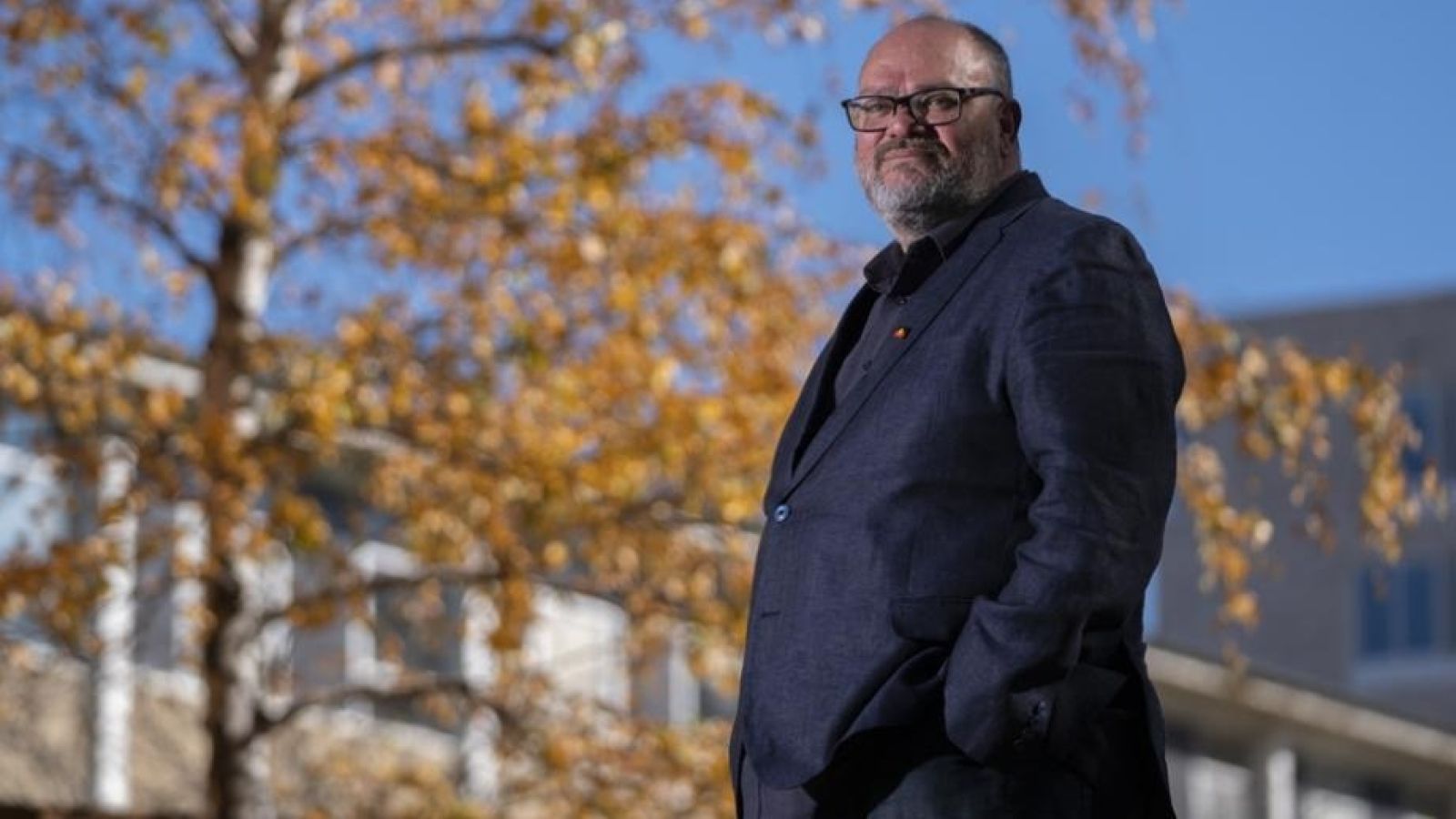Q&A: An early sense of social justice for Tony Dreise

Professor Tony Dreise, Director of the ANU Centre for Aboriginal Economic Policy Research. Photo by Lannon Harley.
This year Professor Tony Dreise became the first Indigenous Director of the ANU Centre for Aboriginal Economic Policy Research, Australia’s foremost research body in this area. He spoke to Adam Spence and Kaya Kaihe* about his new role.
What is your background and how has it influenced your thinking?
My heritage and cultural ties are to the Guumilaroi and Euahlayi people of north-west NSW and south-west Queensland. Growing up in a relatively remote town, I started to develop an early awareness about isolation, about a lack of services, about limited opportunities for young people.
That rather sharpened my senses to both education and public policy. That early sense of social justice set into my DNA very early – I could see people living in poverty and people struggling to get food on the table.
With our parents’ support and expectations, there was this silent unpressured culture of ‘Hey, there’s a big world out there, go and explore it’. Quite early on, I thought, ‘I want to go see that world and I want to go influence that world’.
There’s no section of society in greater need for better outcomes than Aboriginal and Torres Strait Islander people.
What was your interest in studying teaching and how has it influenced the path that has now brought you to the Centre?
My interest in education was always more at a policy level than practice level. I admire teachers and five of my siblings, unlike myself, stayed in the profession. I taught for a short time, then became what was called a graduate policy officer with the Queensland Government’s Cabinet Office.
I was only in my early twenties and enjoyed early exposure to the workings of government and the way public policy is developed. Public policy is a process of choices and trying to work through competing interests. It’s all about being able to positively influence policy.
I think that's our job at CAEPR, to gather evidence, engage with stakeholders, ask hard questions and probably – inevitably – come up with complex answers because this field is complex.
CAEPR’s focus is on Indigenous social and economic development. We’ve seen examples recently of resource and business proposals conflicting with Indigenous interests. How should we balance these?
You balance it by being inclusive in your processes and by empowering voices – good policies are made through strong and inclusive stakeholder engagement. First Nation people often have to balance these tensions between, for example, caring for Country and an economic base. The perfect example of that is mining. But, at the end of the day, it’s about empowering those local people to make those choices and making sure local people have the full facts in front of them.
What do you think is the potential for recognition or even an Indigenous voice in parliament?
When you realise that Indigenous people have been fighting for their rights and their voice for more than 230 years, three years isn't that long. When you talk about a sovereignty that has existed, who knows – anywhere between sixty-five and more than a hundred thousand years; when you talk about sovereignty that's lasted that long, our people will stand their ground and I think one day we will have it. What form it takes, we will see, there is a lot more design work to be done.
We’ve had an election, one with an unexpected outcome, what do you think it means for Indigenous policy?
The government outlined a number of things in the Budget which I think are encouraging. For example, an expansion of opportunities through procurement. Procurement policy has led to the growth of hundreds of Indigenous small businesses and enterprises. That’s encouraging because economic participation is vitally important for our people.
There are other policies that we'll need to monitor for their effectiveness because they tend to be contentious among Aboriginal communities. For example, the cashless debit card. We need to ensure there’s a rigorous evaluation program around that and the evaluation is more than the claims of vested interests. I think that’ll be important.
The design work around giving an Indigenous voice to policy-making is critically important, something I hope CAEPR can have some role in or influence the many things the government works on.
What do we need to do better in Indigenous policy and what would you most like to achieve in your term as Director?
What brings me to CAEPR and ANU is that this is Australia’s national university, and that brings with it obligations to present a national narrative and undertake robust research to improve the nation. In improving the nation, there’s no section of society in greater need for better outcomes than Aboriginal and Torres Strait Islander people. The Centre turns 30 next year. Its research output on Indigenous policy is probably unmatched, arguably anywhere, not only in this country but internationally. The volume and quality of work has been solid over those 30 years, so that's certainly a strength. I’d like to see the 30th anniversary as an opportunity to reflect back on those years. Next year should also be a time to pause and facilitate conversations about where Indigenous policy is at, including through a national conference. I also want to look into the next 30 years which will bring us to 2050, and projecting around the state of First Nation’s affairs at that point in time. I think 2020 will be a big year for us.
*Kaya is an Indigenous trainee working at the ANU College of Arts and Social Sciences.
This article appears in the Spring 2019 edition of ANU Reporter.